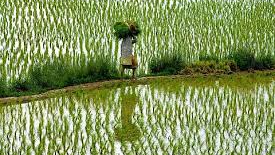

Kharif Sowing Progresses, But Crop Patterns Shift
A favorable monsoon has propelled India's Kharif sowing season. According to the Union Ministry of Agriculture, nearly 85% of the planting was complete as of August 1. While the overall acreage is up by almost 5% compared to last year, the data reveals a significant shift in farmers' preferences, with a notable move away from oilseeds towards crops like maize and sugarcane.
Paddy and Maize See Major Gains
The total area under Kharif crops has reached 932.93 lakh hectares. Paddy, the main Kharif crop, has seen a substantial 16.69% increase in sowing area. However, the most interesting trend is the surge in maize cultivation. The area under maize has jumped by a remarkable 11.74%, as farmers are increasingly drawn to the crop due to its high demand as a feedstock for ethanol production. This has led to a general increase in the area under coarse cereals. The sugar and ethanol sectors also have reason to be optimistic, as sugarcane acreage has risen by nearly 3%.
Oilseeds and Pulses Lose Ground
This shift has come at the expense of other important crops. Despite the government's push for self-reliance in edible oils, the area under oilseeds has declined by almost 4%. Soybean cultivation, in particular, has dropped by nearly 4%, as many farmers were discouraged by the low market prices they received last season.
The area under pulses has also seen a marginal decline. The sowing of tur (pigeon pea), a key pulse crop, has fallen by over 6.6%. This trend suggests that market dynamics and the promise of better returns from crops linked to the biofuel industry are currently outweighing traditional farming patterns and government incentives for oilseed production.